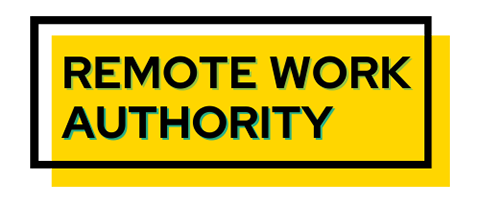Remote work has uncountable benefits for companies, leaders, and employees. If you feel like it’s not working out, you may be guilty of one (or more) of the common mistakes remote leaders make. Once you become conscious of your errors, you’ll lead your team with ease.
With at least a couple of good years of remote work under almost everyone’s belt, we’ve learned much about communicating and connecting from afar. To successfully lead a remote team, you must create a welcoming virtual space with trust, clear communication, meaningful interactions, inspiration, and a positive, safe atmosphere.
By recognizing common mistakes remote leaders make and learning from them, you can create a virtual utopia for you and your team.
11 Most Common Mistakes Remote Leaders Make
1. Not Trusting Your Team
Without trust, you’ll feel stressed and anxious, and your team will feel the pressure. Leaders who don’t trust their team often micromanage and over-schedule check-ins and video meetings, distracting employees from their tasks.
2. Not Checking In Enough
On the other hand, delegating tasks and disappearing is also less than ideal. Instead of calling meetings, a casual check-in via Slack or Discord is a great way to let your team know you’re there if they need anything.
3. Lacking Self-confidence
A study from the Harvard Business Review showed that 40% of remote leaders lack self-confidence when it comes to their ability to manage remote workers.
You are the example and inspiration for your team. Guide with confidence and authority. If you’re too casual or seem unsure of yourself, your team might not take you seriously.
4. Not Providing Feedback
Who doesn’t love a good compliment about their work? However, as a manager, you must also deliver constructive criticism at times. Whether good or bad, set a goal to check in and offer compliments or guidance to your employees quarterly.

5. Setting Unclear Expectations
If your team doesn’t fully understand the assignment, you’ll be disappointed when you see the results, and they’ll be frustrated that they have to work on it again. Assign projects with as much detail as possible and encourage employees to contact you for clarity if they need it.
Upon hiring, you should also be clear about what hours you expect them to work or when you expect them to be available.
6. Measuring Hours Worked Over Output
As a remote leader, you’re not likely to know when an employee is at their desk or not. A survey from FlexJobs shows that 56% of employees value having flexibility in their day. Focus on your employees’ output instead of how many hours they spend on a project.
“Tracking hours instead of outputs is a relic of the past…. Instead of tracking whether or not an employee is online, invest in tools that make it easy for employees to document and upload their work.”
Darren Murph – VP Workplace Design & Remote Work
Ask yourself the following questions:
- Is the employee fulfilling the duties and obligations of their role?
- Are they completing quality work in a timely manner?
- Do they make themselves available to you and their team when needed?
7. Not Creating Company Culture
Company culture creates a feeling of belonging and unity. A 2023 study from TeamStage shows that a company with highly engaged employees can be 202% more productive. Additionally, 88% of job seekers feel that a positive company culture is vital for success.
Start by introducing new employees to the rest of the team and providing an exceptional, complete, and unique onboarding process. Be transparent about the company’s goals and values.
Help remote teams bond over shared interests and experiences by creating places where employees can chat about non-work-related topics.
8. Not Showing Interest in Getting to Know Your Team
Remote work doesn’t provide much opportunity for water-cooler conversation. Take a day out of your calendar to check in and chat with each team member over whichever business messaging app you use.
Start topical–ask about their city, the weather, and nearby attractions. If it’s appropriate, over time, you can ask more personal questions about family, weekend plans, etc. These small conversations create a bond and help remote employees feel less isolated.
9. Only Communicating by Email
Email communication is typically formal and can feel cold, especially if that’s your only form of contact. Use a business messaging app, like Slack or Discord, for the majority of your communication. If possible, virtual team meetings and in-person meet-ups are ideal.

10. Assuming Your Team Works the Same Hours as You
Respect your employees’ time. If your employees have set hours, only contact them during those hours. Just because you’re working late doesn’t mean they are.
If they don’t have set hours, avoid sending emails on the weekends or late at night, and don’t expect an immediate reply.
11. Not Offering Opportunities for Growth
Whether your entire company is remote or not, the employees you don’t see or chat with often don’t want to be left behind. Share work-related developments and news stories with them, keep them updated about seminars, and encourage learning.
Ask them what their plans for the future are. Are they interested in moving up within the company or switching to a different role? Ask and encourage. Above all, take notes so that you can keep the employee in mind when an opportunity arises.


